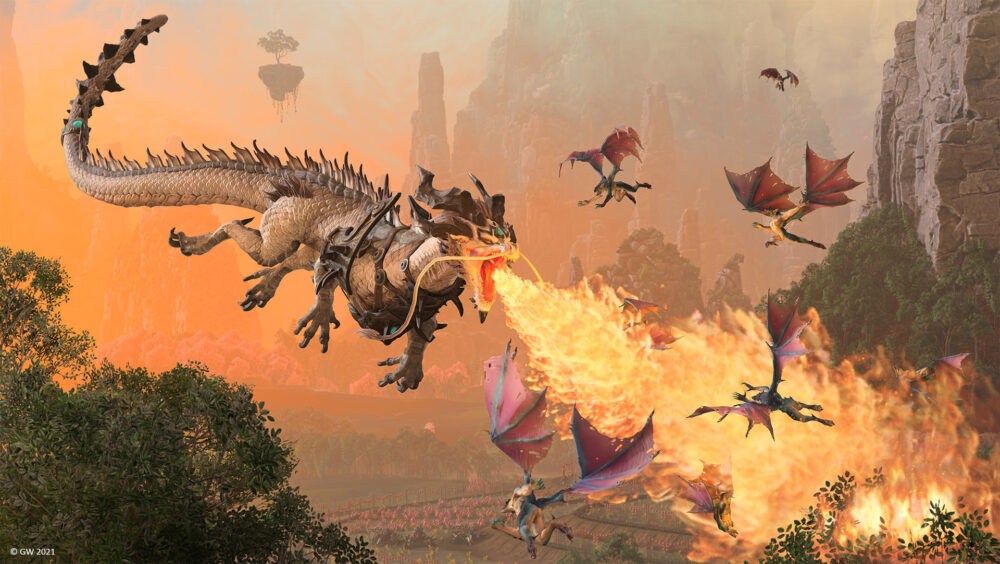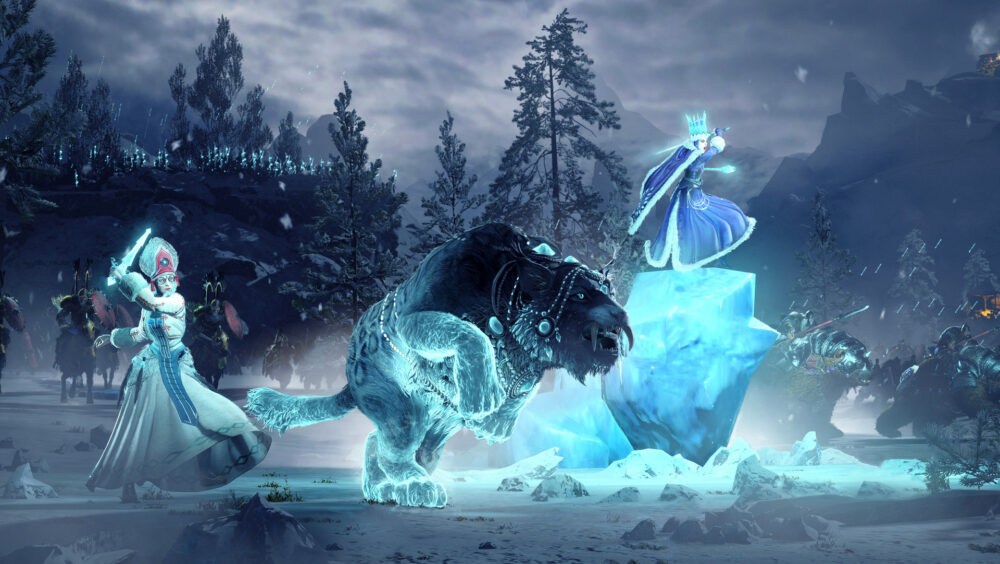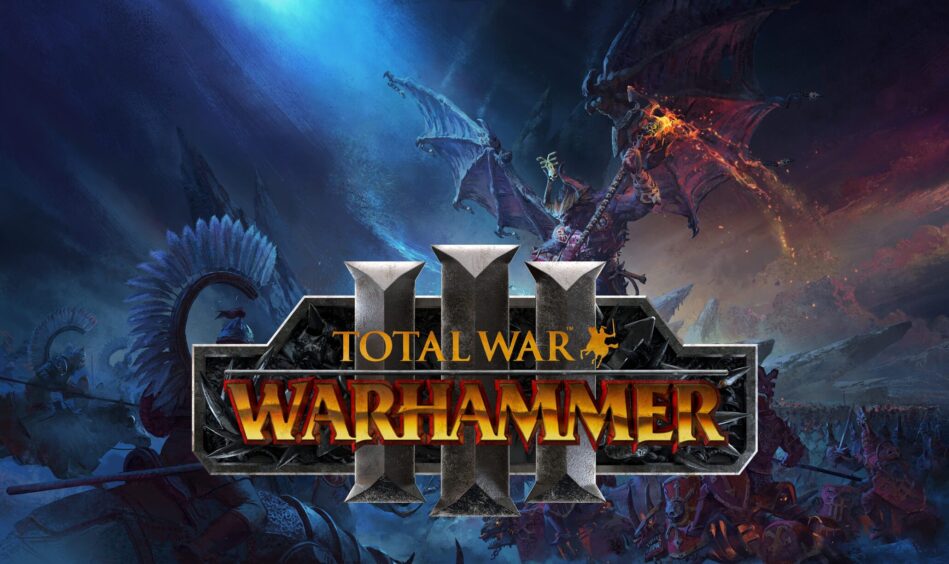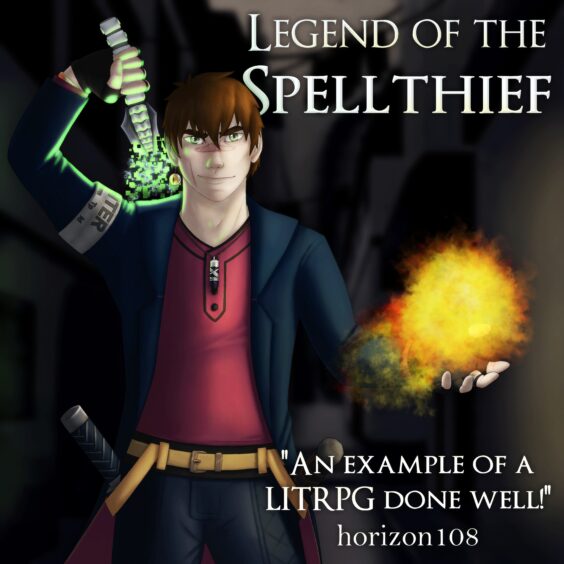After six years, we’ve finally come to this; the end of Total War: Warhammer. Originating from the genius mixing of two long-running franchises, the series has been somewhat of a breath of fresh air for fans of both. Warhammer fans finally had a decent way to jump into the original Warhammer Fantasy world which lived up to the mass-bloodshed and strategy found in the tabletop game. Total War fans finally had a more fantasy-based game to play, eschewing the often over-serious tone of previous entries. Despite the first two games facing some stumbles, both continued to be popular well after release thanks to the forward-compatible nature of races, meaning that players of TWW1 could use all of their races in TWW2 on the grand Mortal Empires campaign map, comprising of the entire world as found so far in the titles. The big question is – can the final entry tie the series up nicely and provide the ultimate, definitive Warhammer Fantasy experience?
First and foremost, I’m going to focus mainly on changes in this review. My previous reviews of the first (https://invisioncommunity.co.uk/total-war-warhammer-review/) and second (https://invisioncommunity.co.uk/total-war-warhammer-2-review/) titles focus on the basic mechanics of the game, and in all honesty not much has changed in regards to those. I’d recommend checking those out to gain a full understanding of the basic mechanics and history of the series. The biggest and most important changes are the addition of a new campaign, the addition of 7/8 new races and a host of quality-of-life improvements, so I’m going to hone-in on those.

The campaign this time around focuses on the northern portion of the Warhammer Fantasy “old world”. For many years, the people of Kislev – a human nation seemingly inspired by east and southern Slavic kingdoms – have suffered under an endless winter, due to the disappearance of the Bear-God Ursun. Two brothers set off to find Ursun – who had been imprisoned by the forces of Chaos – but after one of the brothers is tainted by chaos and kills the other, the God-Bear is fatally wounded and the surviving, murderous brother is transformed into a daemon prince. The aftermath of this tears the fabric between the material realm and the realm of chaos and leads a cursed mage known as the Advisor – returning from the previous titles – to seek an ally with whom he can find Ursun – still imprisoned by a Daemon Prince – and break his own curse.
Your choice of faction decides who this Advisor joins, and who he leads to find the four souls of chaos and eventually reach Ursun. Each faction has its own reasons for wanting to find Ursun, but regardless the campaign follows the same path, with only a few story beats and tonal changes between them. What comes next is what you’d expect from any Total War game; you march around the world map killing enemies, capturing settlements, bartering with allies and proceeding towards your ultimate goal – Ursun himself. The plot as a whole is more involved that in many other Total War titles, and whilst I appreciate a more fleshed-out narrative it does limit replayability to have all factions after the same, very similar goal. I enjoyed the differences between factions in TWW2 – with some wanting to stop the maelstrom and some wanting to expand it, and it’s a shame that more individuality wasn’t incorporated into the factions’ overall plotlines.
What IS interesting however is the variety of playstyles within the roster this time around, as each has a lot more unique mechanics to set them apart from their counterparts. Let’s see who you get to play as this time…

Kislev
Kislev’s army consists of a variety of strong human infantry and cavalry units. Alongside their more mundane units, there are huge icy polar bears, snow leopards and Elsa-esque ice witches and frost maidens. The combat of this faction is very traditional, but they also have two unique resources – devotion and supporters – which can give the player extra abilities. They are also able to assign leaders to govern areas and train their magical units outside of battle to reduce their costs. Finally, they have their own internal struggle to contend with alongside the world-shattering plot, leading to a need to wrestle with other Kislevite factions to grow their technology and influence.
Grand Cathay
An eastern-inspired faction, Cathay’s gameplay revolves around the balance of Yin and Yang, with benefits to be found by balancing the scales. Certain actions will push you one way or the other, as will fielding units aligned in each direction. By fielding both types of units, you can gain buffs and synergies, leading to an interesting style of play. The majority of their troops are weak and cheap, but these are bolstered by a varied range of more powerful troops. My personal favourites include the terracotta sentinels and gorgeous dragons. Oh, they can also send out trade caravans and manipulate the winds of magic – with both provings very useful throughout the campaign.
Khorne
If you want to battle constantly, Khorne – the Chaos God of violence – is your guy. A Khorne campaign emphasises destruction, corruption and battle over diplomacy and ends up being very mobile in general. Their units are mainly melee and consist of both daemonic and mortal units. They also gain resources by killing, again encouraging a brutal play style.
Nurgle
Nurgle is the lord of Plagues, so obviously, his faction was always going to be gross. His unique resource is Infection, and your army power is going to be very much linked to how many infections exist and how much corruption you’ve spread. The strategic growth of a Nurgle campaign is also unique, in that buildings grow, die and are reborn cyclically. Units can be spawned pretty much anywhere, but start at low health and slowly gain strength. Units in this army are generally very resilient and have a good mix of ranged and melee prowess. I’d just recommend not looking too closely at them.
Tzeentch
The unholy god of knowledge seeks just that – knowledge. The unique resource of Grimoires allows the player to magically alter things on the world map – from revealing a faction’s intentions and manipulating diplomatic relationships to outright stealing settlements and causing rebellions. He can also teleport his units across the world using the winds of magic, which he can also manipulate. The majority of Tzeentch’ s units are ranged, but some of his mortal units do have a degree of melee prowess.
Slaanesh
Slaanesh has always been my favourite Chaos God. His realm of desire, pleasure and excess just sounds more fun than blood or pus. The only daemonic faction which can act diplomatically with mortal races, he can force other factions to become vassal states and seduce enemy units prior to battle. His unique Devotee and Seductive Influence systems allow a Slaanesh player to overwhelm enemies with ease, and I simply love how they’ve implemented Slaanesh’s flavour into his faction. It’s all about cults, and I love it! His units are speedy and powerful but die easily, meaning you’re often left feeling like a glass cannon.
Daemons of Chaos
As Daemons of Chaos – my personal preference – you take control of the god-killer himself and can recruit units from all four Chaos armies. Through devoting your resources to different gods, you gain favour with each and expand the gifts they offer you. With five separate unique resources (the gods and Chaos Undivided favour) you feel like your choices really matter. In addition, your Daemon lord can be fully customised through the gifts each god offers. As your devotion increases, you can choose to devote to one God or maintain neutrality. I enjoyed making my own Daemon Prince with bladed arms and a bird face thoroughly, and I definitely feel like it’s the most unique and player-led option of the roster. As he can recruit from all four other chaos factions, it’s pretty easy to create a balanced army, even if you miss out on some of the more powerful units of each individual faction.
Ogre Kingdoms (Early-purchase DLC)
With the game itself, I also received the Ogre Kingdoms DLC. Appearing in the campaign regardless of whether you own it, the playable faction itself was available free for the first week after release and is now available for £10 separately. Ignoring the ridiculous price tag, Ogre Kingdoms is a great faction with the ability to set up camps near settlements. They have a unique resource – meat – and can complete contracts for allied or neutral factions. They aren’t numerous, but what they lack in unit number they make up for in size and power. With a huge number of monstrous units, they can be a really fun faction to play with. Their only area of weakness is their lack of aerial units.
As you can see, the factions included are nothing to sniff at. Each is unique, and whilst I do feel like it’s a bit of a cop-out having five factions of Chaos Daemons, I will admit that it’s thematically consistent with the game itself. Considering they’ve also already done every other race in the previous games, I suppose they also didn’t have many other options. My only criticism of the game’s roster at the time of review is the lack of cross-game compatibility, which was the best thing about TWW2. Being able to play as any owned race in the most recent game has always been superb, and the fact that it isn’t here at launch is disappointing. Unfortunately, the Mortal Empires mode is also noticeably absent at the time of writing, meaning that overall replayability will be hampered for a time.

This isn’t just a glorified race-pack however; thankfully the improvements seen in more recent Total War games have come to Warhammer. There are many, many improvements to mention, but most boil down to simply making the game more accessible for newbies to the series. The tutorials have been clarified and a number of extra buttons have been added to help with the more time-consuming and tedious areas of the franchise. No more do you have to meticulously modify the parameters of each diplomatic discussion – there’s simply a button that automatically offers a deal they’ll likely accept. It’s a lot of small changes – like being able to tell if an enemy unit is bracing against your upcoming charge – but they all coalesce to form a much better experience than that offered by the previous game in the series. In addition, there are many new options specifically linked to diplomacy, including the ability to set up outposts in the allied territory and recruit units from other factions. Both are long-requested and well-implemented. It’s the little things, but the interface and overall polish of the mechanics just feel stepped-up over TWW2.
Graphically, not much has changed, but what was already there has been put to damn good use. Maybe it’s the varied design of the overworld and the battle maps, or maybe it’s the abundance of chaotic forces in play, but this game sets a beautifully grim tone from the word go. It’s both dark and colourful, with corruption tainting the snowy landscape as the campaign progresses. FPS performance isn’t too bad either – it is neither better nor worse than the previous game, but considering it’s 5-years later that is in itself a bit of a double-edged sword. There are a few bugs in the game at the time of writing, but I’ve been reliably informed that patches to those are coming very shortly, so hopefully, those small issues will be resolved by the time this review goes live.

Aurally, however, I was blown away. The mixture of unique and rousing tracks inspired by each faction is momentous, with each feeling perfectly in line with the units and overall feel of each army. I particularly enjoyed Kislev’s Slavic battle-chanting, which could easily draw comparisons to the soundtrack of The Witcher 3. That, along with the well-produced voice acting and incidental sound makes for an epic-sounding game that just drew me further into the experience.
All in all, then, Total War Warhammer 3 is a bit of a mixed bag. I absolutely love the mixture of new factions, the overall atmosphere of the game, the spectacular sound design and the bevvy of mechanical improvements. However, the whole package is marred by the lack of meaningful replayability features, the question of whether the improvements merit a sequel over an expansion, and the simple fact that the most beloved feature of the series – Mortal Empires – is missing on arrival.
For now, I’ll give it the benefit of the doubt. It’s a fantastic game generally, and once more free content arrives in the form of Mortal Empires (and as long as it’s good,) I have no doubt this will end up being THE definitive Warhammer Fantasy experience,
Platforms: macOS, Microsoft Windows, Linux, Macintosh operating systems
Developers: Creative Assembly, Feral Interactive
Publishers: Feral Interactive, Sega
Enjoy the review? want to read more of our reviews? then click right here to be whisked away to the realm of our opinions.








You must be logged in to post a comment.